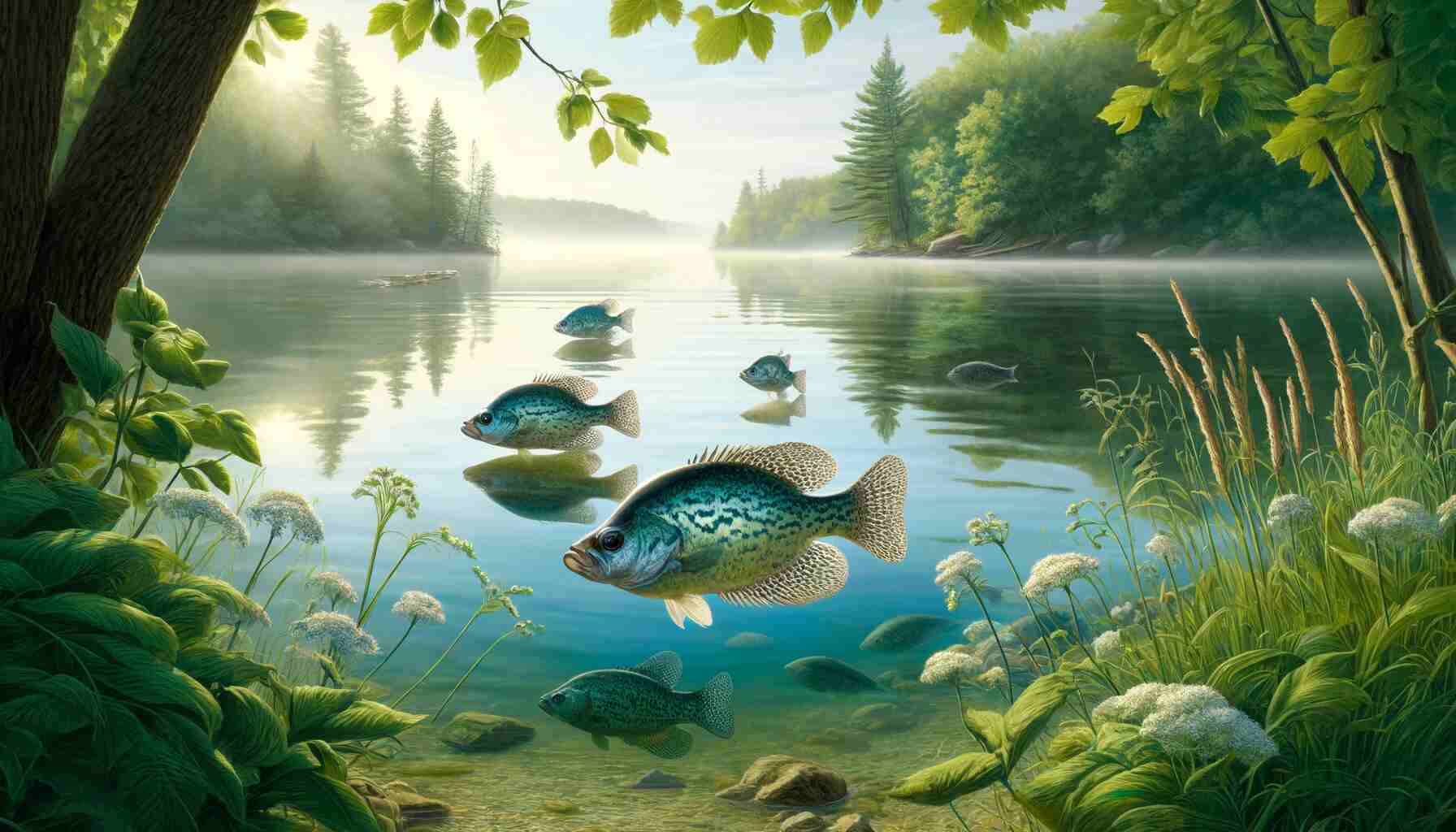Crappie, renowned for their delectable taste and challenging angling, are a favorite catch among freshwater fishermen. However, while many anglers are familiar with how to catch crappie, few may know much about their lifespan.
Understanding Crappie Lifespan
Crappie, belonging to the Centrarchidae family, encompass two main species: the black crappie (Pomoxis nigromaculatus) and the white crappie (Pomoxis annularis). These species are native to North America, inhabiting freshwater bodies such as lakes, reservoirs, rivers, and ponds. To comprehend their lifespan, it’s essential to distinguish between these two species as they exhibit slight differences in growth rates and longevity.
Black Crappie Lifespan
Black crappie typically have a slightly longer lifespan compared to their white counterparts. On average, black crappie can live up to 7 to 10 years under optimal conditions. However, several factors influence their longevity, including habitat quality, availability of food, predation, and fishing pressure.
White Crappie Lifespan
White crappie, while similar in appearance to black crappie, tend to have a slightly shorter lifespan. In favorable conditions, white crappie can live between 5 to 8 years. Similar to black crappie, their lifespan is subject to various environmental factors and human activities.
Factors Influencing Crappie Lifespan
- Habitat Quality: The quality of the habitat significantly impacts the lifespan of crappie. Clean water, adequate oxygen levels, suitable water temperature, and sufficient cover for protection and spawning are essential for their survival. Pollution, habitat degradation, and alterations to natural water flow can adversely affect their lifespan.
- Food Availability: Crappie are opportunistic feeders, primarily consuming small fish, insects, crustaceans, and zooplankton. Availability of prey species influences their growth rates and overall health, thereby affecting their lifespan. Overfishing and changes in prey abundance due to factors like invasive species or habitat degradation can impact their longevity.
- Predation: Predation plays a crucial role in determining the lifespan of crappie. Juvenile crappie are particularly vulnerable to predation by larger fish, birds, and mammals. Balancing predator-prey dynamics is essential for maintaining healthy crappie populations.
- Fishing Pressure: Intensive fishing pressure, especially targeting larger individuals, can truncate the lifespan of crappie populations. Practices such as selective harvest, catch-and-release, and adherence to size and bag limits are vital for sustaining crappie populations and ensuring their longevity.
Crappie Lifespan Statistics
Here are some relevant statistics related to crappie lifespan and conservation efforts:
1. Average Lifespan of Crappie
According to studies conducted by fisheries biologists, black crappie have been known to live up to 10 years, while white crappie typically have a lifespan of around 8 years on average.
2. Impact of Habitat Degradation
The U.S. Environmental Protection Agency (EPA) reports that approximately 40% of lakes and rivers in the United States are too polluted for fishing, swimming, or aquatic life. This pollution can significantly impact the lifespan of crappie populations by degrading their habitat and reducing water quality.
3. Fishing Pressure and Population Decline
Research published in scientific journals such as the North American Journal of Fisheries Management indicates that intensive fishing pressure can lead to declines in crappie populations. In some heavily fished waters, crappie populations have experienced significant reductions in size and abundance, affecting their overall longevity.
4. Conservation Efforts and Successes
The National Fish Habitat Partnership (NFHP) reports that collaborative conservation efforts have led to the restoration and enhancement of over 6,500 miles of rivers and streams and 225,000 acres of lakes and reservoirs in the United States. These efforts have benefited various fish species, including crappie, by improving habitat quality and supporting healthy populations.
5. Economic Importance of Crappie Fishing
According to the American Sportfishing Association (ASA), crappie fishing contributes significantly to the economy, generating billions of dollars in economic activity annually. This economic value underscores the importance of sustainable management practices to ensure the long-term viability of crappie populations and the recreational fishing industry.
6. Age Determination Studies
Researchers have employed various methods to determine the age of crappie, including scale analysis, otolith examination, and length-frequency analysis. These studies have revealed the age structure of crappie populations in different regions, contributing to our understanding of their lifespan.
7. Longevity Records
While individual crappie lifespans can vary, there are documented cases of exceptionally long-lived individuals. For instance, in some studies, black crappie have been recorded living up to 15 years, showcasing the potential for longevity under optimal conditions.
8. Population Surveys
Fisheries agencies and research institutions conduct population surveys to assess the health and demographics of crappie populations in various water bodies. These surveys provide valuable data on population size, age distribution, and growth rates, offering insights into the factors influencing crappie lifespan.
9. Catch Data
Angler catch data collected through fishing tournaments, creel surveys, and recreational fishing reports can also offer insights into crappie lifespan. Analyzing catch data allows researchers to track changes in population dynamics over time and assess the impact of fishing pressure on crappie longevity.
10. Environmental Monitoring
Monitoring programs focused on water quality, habitat health, and ecosystem dynamics provide valuable context for understanding the factors influencing crappie lifespan. Long-term environmental data sets can help identify trends and correlations between environmental variables and crappie survival.
Conclusion
In conclusion, how long crappie live varies depending on species and environmental conditions. Black crappie generally live longer than white crappie, with lifespans ranging from 7 to 10 years and 5 to 8 years, respectively. Factors such as habitat quality, food availability, predation, and fishing pressure exert significant influence on their longevity.
As stewards of the environment, it is our responsibility to safeguard these iconic fish species for future generations to appreciate and cherish.










